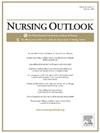Historical and contemporary perspectives on nursing workforce satisfaction
IF 3.7
2区 医学
Q1 NURSING
引用次数: 0
Abstract
In 1928, the Committee on the Grading of Nursing Schools published “Nurses, Patients, and Pocketbooks,” which surveyed nurses and revealed widespread dissatisfaction with working conditions, pay, and hours, despite a strong commitment to patient care. Nearly 100 years later, the 2024 National Nursing Workforce Survey by the National Council of State Boards of Nursing echoes similar concerns on a much larger scale. The COVID-19 pandemic further intensified these issues, accelerating retirements and increasing the demand for complex care. These pressures have continued to erode job satisfaction and exacerbate the ongoing nursing shortage. Nurse dissatisfaction is not a new phenomenon but a persistent, systemic issue with serious implications for workforce retention and patient care quality. By tracing the historical continuity of these challenges, the urgent need for structural reforms in nursing leadership, policy, and practice are highlighted. The aim of this work is to explore how nursing satisfaction has evolved over the past century, describe persistent challenges, and offer implications for nursing leadership and policy.
护理人员满意度的历史和当代观点。
1928年,护理学校分级委员会出版了《护士、病人和袖口书》,对护士进行了调查,结果显示,尽管护士坚定地致力于照顾病人,但他们对工作条件、薪酬和工作时间普遍感到不满。近100年后,美国国家护理委员会(National Council of State Boards of Nursing)进行的2024年全国护理劳动力调查(National Nursing Workforce Survey)在更大范围内呼应了类似的担忧。2019冠状病毒病大流行进一步加剧了这些问题,加速了退休,增加了对复杂护理的需求。这些压力持续侵蚀着工作满意度,加剧了持续的护士短缺。护士不满不是一个新现象,而是一个持续的、系统性的问题,严重影响到员工的保留和病人的护理质量。通过追踪这些挑战的历史连续性,强调了护理领导,政策和实践的结构性改革的迫切需要。这项工作的目的是探讨护理满意度在过去一个世纪的演变,描述持续的挑战,并为护理领导和政策提供启示。
本文章由计算机程序翻译,如有差异,请以英文原文为准。
求助全文
约1分钟内获得全文
求助全文
来源期刊

Nursing Outlook
医学-护理
CiteScore
6.20
自引率
7.00%
发文量
109
审稿时长
25 days
期刊介绍:
Nursing Outlook, a bimonthly journal, provides innovative ideas for nursing leaders through peer-reviewed articles and timely reports. Each issue examines current issues and trends in nursing practice, education, and research, offering progressive solutions to the challenges facing the profession. Nursing Outlook is the official journal of the American Academy of Nursing and the Council for the Advancement of Nursing Science and supports their mission to serve the public and the nursing profession by advancing health policy and practice through the generation, synthesis, and dissemination of nursing knowledge. The journal is included in MEDLINE, CINAHL and the Journal Citation Reports published by Clarivate Analytics.
 求助内容:
求助内容: 应助结果提醒方式:
应助结果提醒方式:


